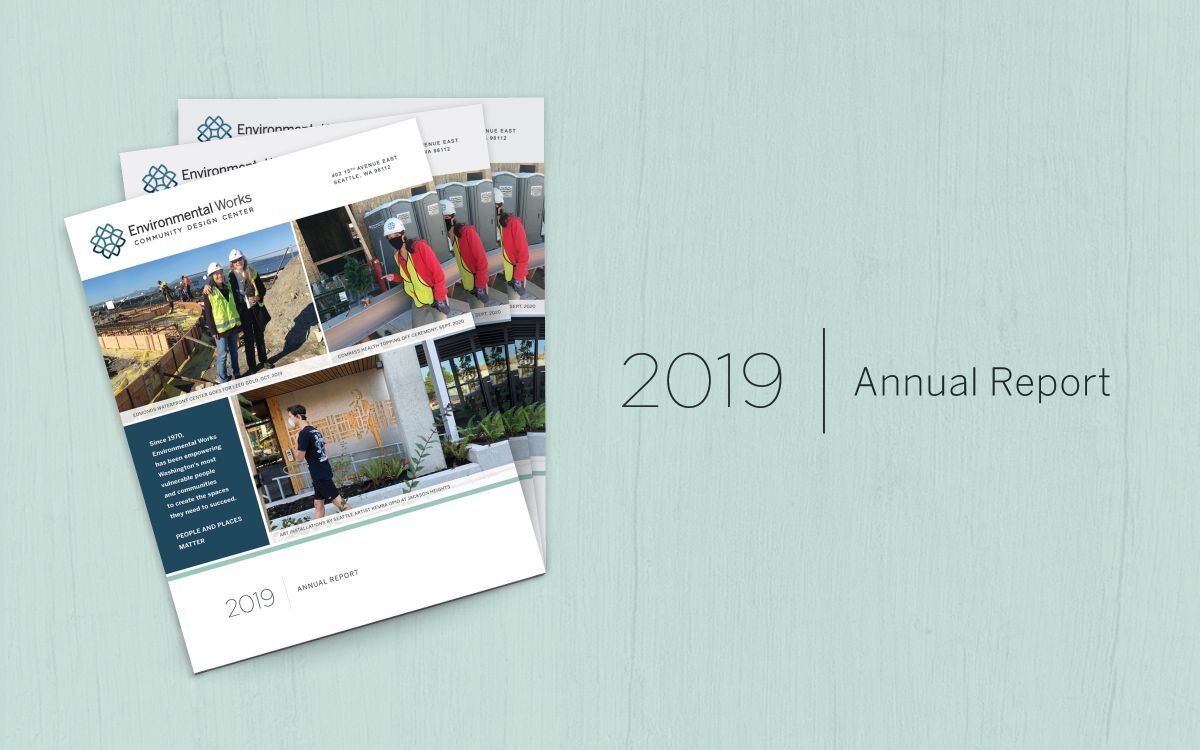We hope your holiday season is safe and peaceful! This month, we interview EW Director of Landscape Architecture Nicolas Morin. We are excited to present our 2019 Annual Report, profiling some of the great projects made possible thanks to partners and supporters like you. And, we share recent highlights from our social media.
Q&A With Nic Morin
Nic came on board when the Barker Landscape Architects team joined EW nearly two years ago. Nic’s 20-plus years of experience as a landscape architect include more than ten years as a collaborator with EW. His experience runs the gamut from waterfront restoration, to community gardens, to play areas, to comprehensive park planning and design.
What drew you to a career in landscape architecture?
I started college as a pre-veterinary major, but didn’t find the science-heavy course load fulfilling. I loved art, but couldn’t figure out how make that viable. Then I discovered landscape architecture. Its blending of science, art, and culture, and capacity to build community, immediately drew me in.
How has landscape architecture evolved since you began practicing?
While the technology has advanced, much of what the profession requires remains low-tech: observing the environment and how people interact with it, and appreciating how it functions on an ecological level, to determine the unique advantages of every site. It is equally important to be approachable and to be a good listener. We do our best to appreciate the site from the community’s perspective. Their understanding of the history, symbolism, patterns, issues, and wonder are key ingredients for successful design. It is very exciting to see increasing attention to social justice, inclusive design, and solutions which are adaptive/responsive to climate change.
With newer technology, there are various ways to “bring the site back to the office.” Cameras and drones are great tools for capturing and recreating a space in three dimensions – especially exciting for sharing ideas with community members when we design collaboratively and cannot experience the site together. That said, we can never spend enough time on a site to appreciate the natural cycles and the way it may best serve the community.
My approach has evolved over time. I’ve learned to consider and appreciate how a landscape changes through the decades, and how our decisions as people and designers and community members can translate to positive, long-term change. We do what we can to nurture stewardship, and we hope that most trees we plant today can become heritage trees for future generations.
I’ve also learned to appreciate how important it is to share the story of a space, and to recognize the meaning of even simple things. A child care facility’s gate may just be a gate, until you learn that a community’s seniors constructed it to create something beautiful for their kids and grandkids. It is nice to see physical manifestations of partnership and collaboration.
In what ways does your team research and engage community in projects?
We investigate the human, cultural, and environmental history of a place in every way we can. That includes talking to neighbors, land-owners, and other community members, digging into the archives, as well as studying and researching the space. Even when a place is seemingly a blank slate, its history can be a powerful source of meaning and inspiration.
How has the pandemic influenced how you design outdoor spaces?
Open space has never been more valuable than it is now. That has made our team all the more excited about our work. I’d love to think that we’ll all come out of the pandemic with a greater reverence for public space and what it can provide, and appreciation for how interior and exterior spaces working together connect us to a larger environment. In the past, some clients thought of designed outdoor space as an optional luxury. But now more people recognize that this may not be our last pandemic, and functional and beautiful outdoor spaces are increasingly critical.
The pandemic has made community engagement tough, though. I worry about how to keep the design process as accessible as possible to the widest range of participants while we have to rely more heavily on virtual interaction and social media. Every voice matters and I appreciate a phone call now, more than ever. Though technology is time-consuming and imperfect, there’s still great value to getting people together to figure out a design. Designing together builds community.
Which projects are you most proud of?
This is like being asked to pick my favorite child! While I love them all, I especially love the projects we’ve done that involve grassroots community-based design. As one example, we partnered with dozens of dedicated neighbor volunteers to transform West Seattle’s Barton Street P Patch from a vacant grassy lot into a multi-functional public space full of plants and art. The effort was led by five women in the neighborhood who aspired to create the kind of public space they had seen only in the North End. Our robust community design process gave rise to an exciting design: it’s shaped like a spiderweb that radiates out from a historic birch tree, which neighbors have enjoyed picnicking under for decades. It contains the first community pizza oven in town, and features beautiful gateways made by a local artist from scrap metal. The neighborhood continues to gather there for celebrations, pizza parties, and roasting bagels, as well as gardening.
The 2019 Annual Report is here! Taking some time off over the next several weeks? Read EW's 2019 annual report for inspiring updates on our projects and partners!
ICYMI:




